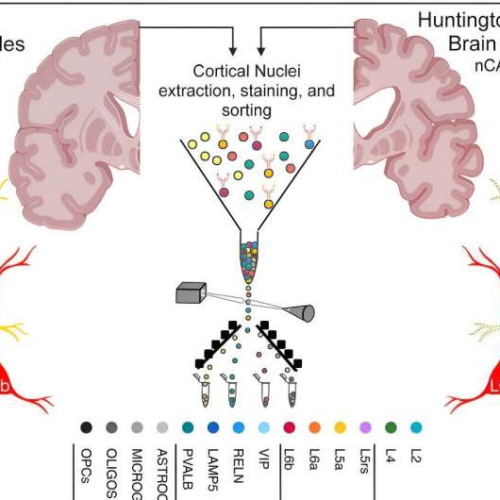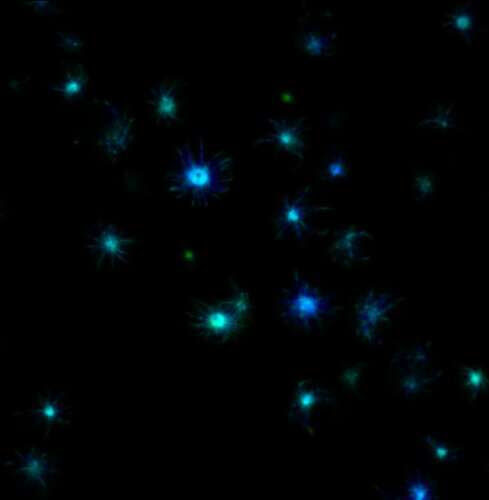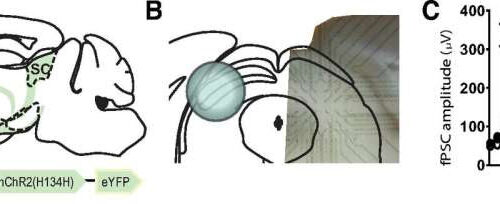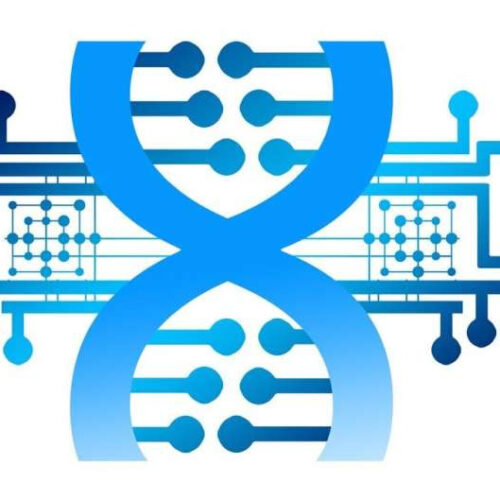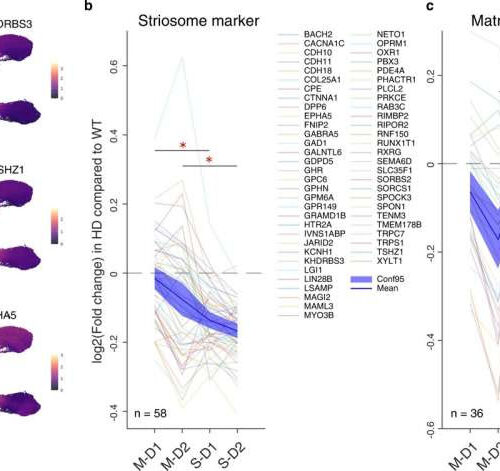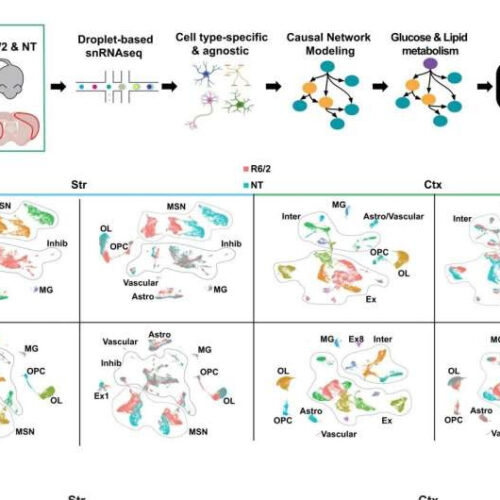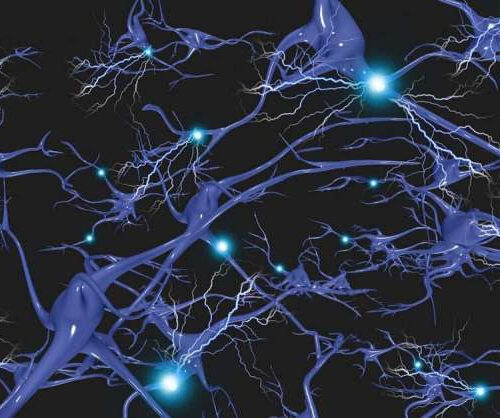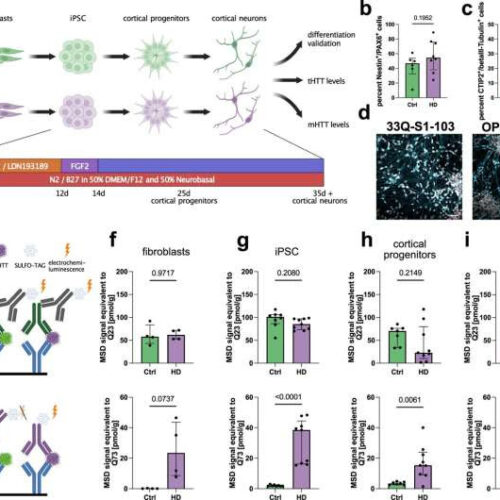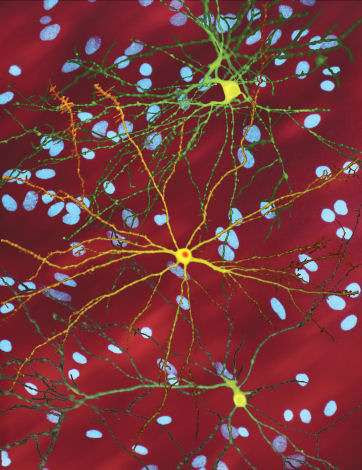by Rockefeller University Credit: Neuron (2024). DOI: 10.1016/j.neuron.2023.12.009Neurodegenerative diseases are among the most complex human ailments, and their exact causes and mechanisms are the subject of ongoing research and debate. When it comes to Huntington’s disease, steadily accumulating evidence over the past 30 years has led to a model of molecular events that explains several key...
Tag: <span>Huntington’s Disease</span>
A high-fiber diet may delay clinical onset of Huntington’s disease, study indicates
by Florey Institute of Neuroscience and Mental Health Credit: Florey Institute of Neuroscience and Mental HealthThe Florey’s Professor Anthony Hannan, Head of the Epigenetics and Neural Plasticity Group, and Research Co-Lead for the Mental Health Mission, said the results of a study published in Brain Behavior and Immunity indicate that dietary fiber could delay the...
Editors’ notes New research reveals the start of Huntington’s disease
by Stowers Institute for Medical Research Fluorescence lifetime micrographs of a fluorescently tagged human protein inside yeast cells. Different colors indicate different states of protein aggregation. Credit: Stowers Institute for Medical Research Devastating neurodegenerative diseases like Huntington’s, Alzheimer’s, and Parkinson’s are all associated with protein deposits in the brain, known as amyloid. Despite extensive research investment into the cause and...
Researchers find new altered neural circuits in Huntington’s disease
by University of Barcelona Optogenetic stimulation of M2 cortex terminals in the SC evoked similar electrophysiological responses in WT and HD mice. A, Schematic representation of AAV-CamKII-ChR2-YFP construct injection at M2 cortex. B, Representative MEA location in coronal slices containing the SC with axons from M2 cortex expressing ChR2. C, Amplitude of fPSC triggered by increasing...
Study reveals the structure of the protein responsible for Huntington’s disease
by Spanish National Research Council Credit: Pixabay/CC0 Public Domain A team with the participation of researchers from the Institute for Advanced Chemistry of Catalonia (IQAC) of the Spanish National Research Council (CSIC) has revealed the structure of the protein responsible for Huntington’s disease, a severe neurodegenerative pathology characterized by the progressive disorder of movement and cognitive function. This research, published in the journal Nature...
How Huntington’s disease affects different neurons
by Anne Trafton, Massachusetts Institute of Technology Data from the human Grade 1 HD patient indicate the loss of compartmental identities as a conserved signature of HD. Credit: Nature Communications (2023). DOI: 10.1038/s41467-022-35752-x In patients with Huntington’s disease, neurons in a part of the brain called the striatum are among the hardest-hit. Degeneration of these neurons contributes...
Study links metabolism changes in certain brain cells to Huntington’s disease
by Pat Harriman, University of California, Irvine Single nucleus RNAseq of mouse and human R6/2 and HD samples. a Illustration of workflow used for this study. After frozen tissue is microdissected from the Cingulate, Caudate, and nucleus Accumbens from 66 samples from 29 human donors (3 grade I, 4 grade II, 4 grade III, 3 grade IV, 5...
CRISPR technology improves Huntington’s disease symptoms in models
by University of California – San Diego In Huntington’s disease, toxic accumulations of the huntingtin protein produced by the mutated HTT gene results in progressive destruction of neurons in a part of the brain responsible for regulating movement. Credit: Huntington’s Disease News Huntington’s disease (HD) is a neurological disorder that causes progressive loss of movement,...
Potential new treatments for Huntington’s disease
by Friedrich–Alexander University Erlangen–Nurnberg Mutant HTT is increased in HD patient-derived cells using an MSD assay. a Paradigm illustrating the HD patient-based disease model (fibroblasts, iPSC, cortical progenitors (25d old), and cortical neurons (35d old)) and readouts. Created with BioRender.com. b Bar plot depicting FACS quantification of NESTIN/PAX6 double-positive cells. Statistics: Welch’s test. Bars: median ± IQR....
Study probes function of Huntington’s disease protein in injured neurons
by University at Buffalo A montage of three images of single striatal neurons transfected with a disease-associated version of huntingtin, the protein that causes Huntington’s disease. Nuclei of untransfected neurons are seen in the background (blue). The neuron in the center (yellow) contains an abnormal intracellular accumulation of huntingtin called an inclusion body (orange). Credit:...

